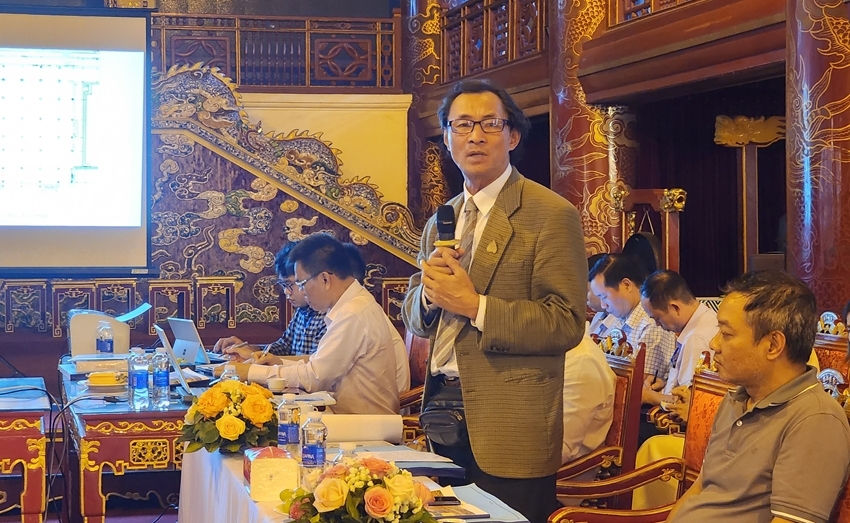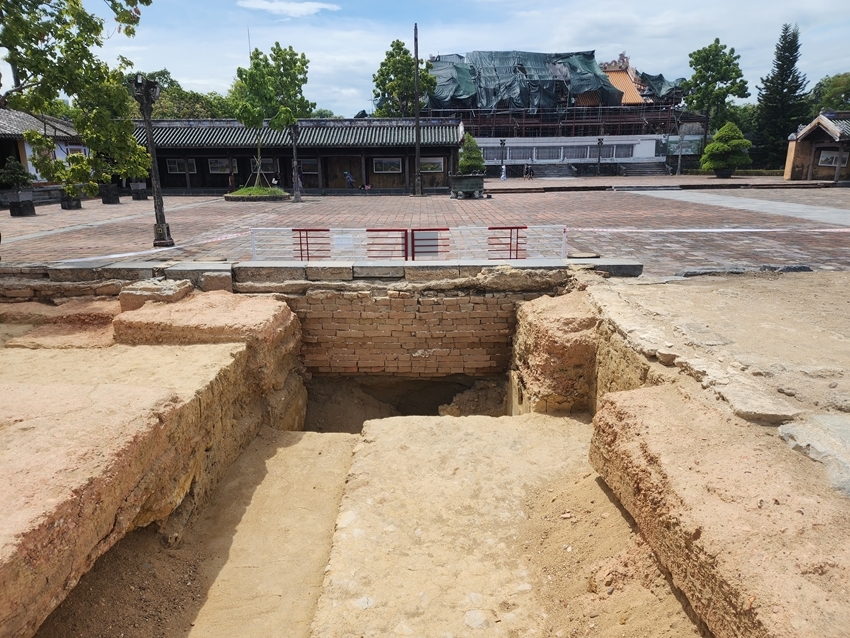 |
| Researcher Pham Duc Thanh Dung commenting on the project to restore Can Chanh Palace |
Previously, at the second thematic meeting in October 2021, the Provincial People's Council passed a Resolution approving the investment policy of the project of "Restoring, renovating, and embellishing Can Chanh Palace" with a total investment of nearly VND 200 billion, from the provincial budget. It is expected that the project will be implemented within 4 years, from the date of commencement (fourth quarter - 2024).
Can Chanh Palace was built in 1804 under the reign of Emperor Gia Long. Until it was completely destroyed in 1947, the building was repaired 11 times with different levels, over the reigns of different Nguyen Emperors. This is one of the works located on the Shinto axis of Hue Imperial Citadel along with Ngo Mon (Noon Gate), Thai Hoa Palace, Dai Cung Mon (Grand Main Gate), Can Thanh Palace, Khon Thai Palace, Kien Trung Palace, etc. Several works on the Shinto Axis are being preserved, repaired and restored, namely Thai Hoa palace, Kien Trung palace, etc.
 |
| Archaeological excavation site of Can Chanh Palace, Purple Forbidden City, Hue Citadel |
During the Nguyen Dynasty, Can Chanh Palace was the place where the Emperors held regular court ceremonies on the 5th, 10th, 20th and 25th days of every lunar month. This was also the place to host diplomatic receptions and banquets for the royal family and the royal court. According to documents, before being destroyed, Can Chanh Palace were structured as follows: the main hall consisted of 5 compartments and 2 double wings, whereas the front hall had 7 compartments and 2 single wings.
After hearing the report by the design consulting unit, experts, scientists and researchers all highly agreed on the report on the feasible research on the investment of the project and said that this was the most appropriate time to carry out the restoration. The participants also suggested that the restoration of Can Chanh Palace should be carefully implemented and divided into 2 phases: Phase 1 focuses on restoring the comprehensive architecture of the project; Phase 2 aims at restoring decorative details, furniture and remaining items. The relationship between Thai Hoa Palace and Can Chanh Palace should be noted to clarify the importance of the monument. It is also important to note the size and structure of the palace as well as conduct research to promote the value of the relic after restoration. At the same time, the project name should be changed to the Restoration of Can Chanh Palace.
Mr. Hoang Viet Trung, Director of HMCC informed that the research process on Can Chanh Palace was implemented decades ago with the participation of international experts; among them, there are experts from Waseda University (Japan). Over the past decades, the Center has conducted research and collected a lot of precious documents and images about this monument. Along with the results of the previous archaeological excavation, more accurate scientific data has been collected for implementing the plan to restore Can Chanh Palace.
